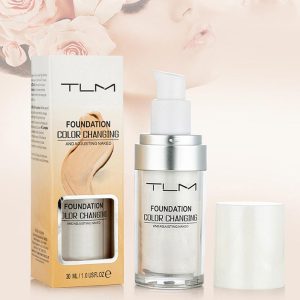Their role encompasses monitoring compliance with house rules, mediating conflicts, and offering support and encouragement. Crucially, they model healthy behaviors and decision-making, demonstrating what a successful recovery looks like in practice. By embedding the principles of peer support into the daily life of the home, they help to create a culture of mutual respect, responsibility, and accountability. These facilities often provide additional services such as on-site counseling, holistic therapies like yoga and meditation, personal training sessions, and recreational activities.
What Rules Apply in a Sober Living House?
Residents are expected to treat fellow residents, staff, and visitors with respect, kindness, and consideration. This includes maintaining appropriate boundaries, refraining from disruptive behavior, and constructively resolving conflicts. Typically, as long as you follow the rules, you may live in the home for as long as you want.
Expected rules of different living homes
Where you live after completing a treatment program for substance use disorder can be an instrumental step https://www.inkl.com/news/sober-house-rules-a-comprehensive-overview in supporting your recovery. Our knowledgeable admissions navigators can answer your questions about treatment and recovery and help you take the first steps in your sobriety journey. Attending scheduled meetings at a sober living house is essential for reinforcing positive habits and achieving sustainable progress. Becoming a part of the community is necessary to take decisive steps toward a healthy life and practice accountability.
What can One Expect in a Sober Living House?
- Knowing others depend on them helps individuals stay committed to their recovery.
- However, many homes offer sliding-scale fees or payment plans to make their services more accessible.
- For those in recovery, choosing a sober living environment can be crucial for achieving lasting sobriety and rebuilding a healthy life.
- Residents are typically expected to actively seek employment or engage in activities that contribute to their personal growth and self-sufficiency.
- As long as you observe the house rules, you can stay until you’re ready to live drug- and alcohol-free on your own.
Additionally, while the structured environment fosters accountability, some individuals may feel that the rules feel restrictive. It often includes practical workshops and classes that help residents develop self-sufficiency and navigate the challenges of independent living. By fostering a sense of community, sober living homes empower individuals to support one another, building valuable relationships that can facilitate long-term recovery. Such establishments allow clients to live in a secure environment to stay free from drugs and alcohol. After completing a substance abuse treatment program, a person should acquire healthy habits and learn how to establish lasting connections to become a productive society member again.
Some sober living homes may have restrictions on accepting individuals with certain types of criminal backgrounds, particularly if there are concerns about the safety and well-being of other residents. This is done to maintain a secure and supportive environment within the sober living home. It is essential to note that sober living homes may have specific admission criteria, such as a commitment to sobriety, completion of a treatment program, or adherence to house rules. It is important to note that these rules and regulations are designed to create a supportive and accountable environment. They help foster personal growth, recovery, and the development of essential life skills.
Powerball Can Lead to Gambling Addiction
For instance, certain states may stipulate that residents must undergo mandatory detoxification before gaining admission. The physical standards of the facilities might differ based on specific state-guided health, safety, or accessibility norms. Residents naturally tend to keep each other accountable, further cementing the importance of following the rules.
These facilities create a supportive and drug-free environment that mitigates relapse risks while encouraging participation in ongoing treatment resources and mutual aid groups like Alcoholics Anonymous. Sober living homes play a critical role in supporting individuals transitioning from addiction treatment to independent living. These homes provide a stable environment for residents to rebuild their lives, focusing on recovery while integrating back into their communities.
What is a Sober Living Environment Like?
Residents are typically expected to actively seek employment or engage in activities that contribute to their personal growth and self-sufficiency. Overall, sober living homes are vital resources that promote sustained sobriety and facilitate the development of a fulfilling life free from addiction. Navigating local regulations often involves building positive relationships with local governments and community members. Open communication and proactive engagement can help operators address concerns and foster support for sober living homes. Local zoning ordinances frequently dictate where sober living homes can be established.
- Insurance coverage for sober living homes is generally limited since they are not classified as formal treatment programs in most policies.
- This continuation of support, motivation, and, in some cases, therapy will significantly enhance their chance of long-term sobriety.
- To support recovery and reduce the risk of relapse, sober living homes do not allow any drugs or alcohol on the premises.
- However, not all sober living houses accept people taking controlled substance medications, even methadone, buprenorphine, and other approved medications for a substance use disorder.
- Living in a sober house is not free; residents are required to pay rent and sometimes contribute to utilities and other household expenses.
This is particularly related to the peer support and solidarity offered at a sober living home where all residents are on the recovery journey together. As the National Institute on Drug Abuse (NIDA) states, peer support programs during and following treatment can help maintain abstinence. The transition from sober living to independent living is a significant step in the recovery process.
Financial Obligations:
However, not all sober living houses accept people taking controlled substance medications, even methadone, buprenorphine, and other approved medications for a substance use disorder. During the sober home interview, ask about policies regarding prescription and sober house over-the-counter medications to see if the living environment is right for you. The risk of relapse when someone leaves addiction treatment is particularly concerning. One study into people being treated for heroin addiction showed a considerable risk of death from overdose in the month following treatment. This indicates the need for greater health education of drug users and the implementation of relapse and overdose death prevention programs.
After successfully completing an intensive treatment program for a substance use disorder, you may feel that you need ongoing support before you’re ready to live independently. The cost varies widely among homes, but transparency in financial matters helps establish trust and stability within the living situation. It also prepares residents for the eventual transition to living independently, where managing expenses is a vital part of daily life. Sober living house is an intermediary place for the inpatient and the outside world.










